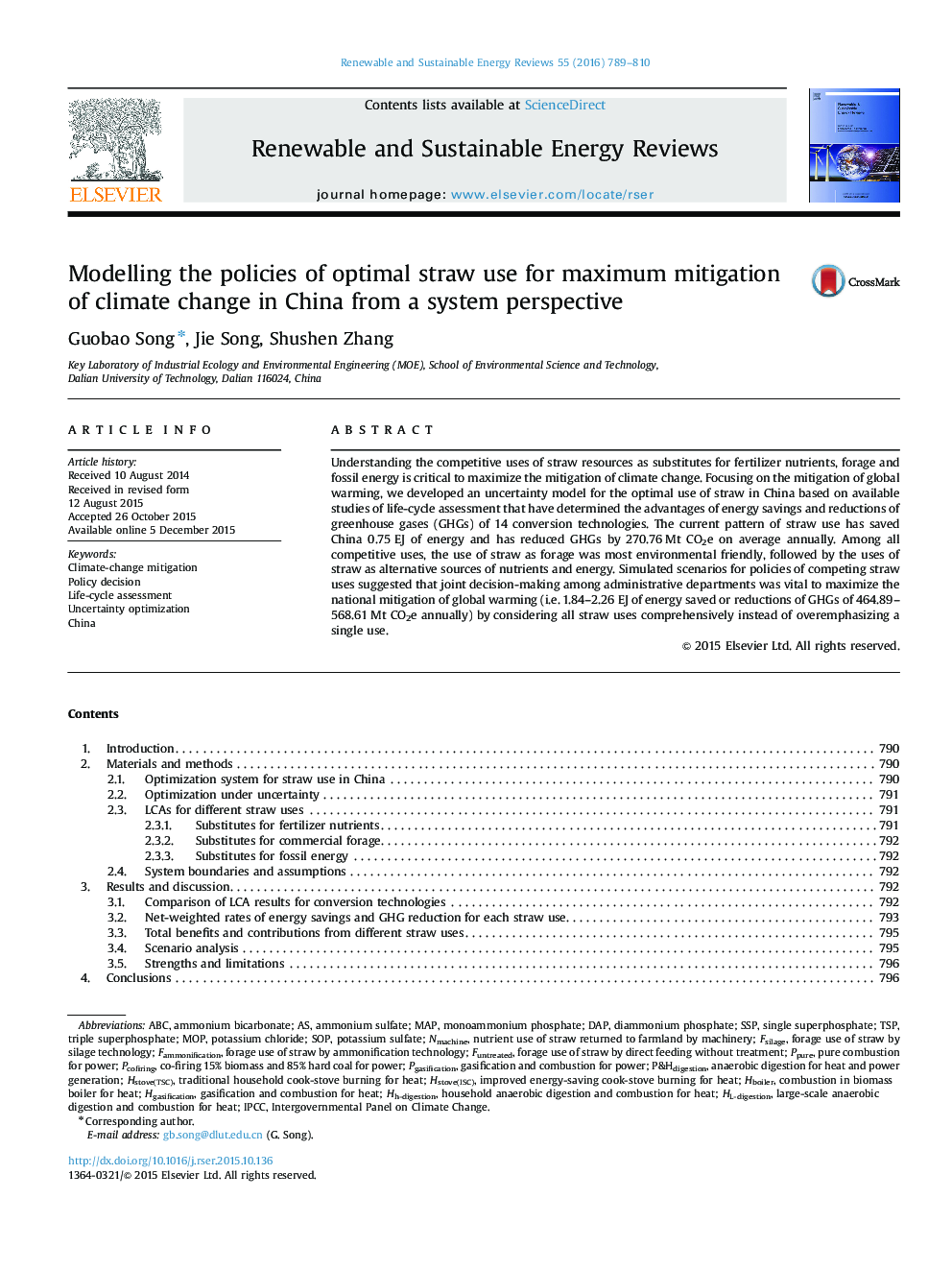| Article ID | Journal | Published Year | Pages | File Type |
|---|---|---|---|---|
| 8115363 | Renewable and Sustainable Energy Reviews | 2016 | 22 Pages |
Abstract
Understanding the competitive uses of straw resources as substitutes for fertilizer nutrients, forage and fossil energy is critical to maximize the mitigation of climate change. Focusing on the mitigation of global warming, we developed an uncertainty model for the optimal use of straw in China based on available studies of life-cycle assessment that have determined the advantages of energy savings and reductions of greenhouse gases (GHGs) of 14 conversion technologies. The current pattern of straw use has saved China 0.75Â EJ of energy and has reduced GHGs by 270.76Â Mt CO2e on average annually. Among all competitive uses, the use of straw as forage was most environmental friendly, followed by the uses of straw as alternative sources of nutrients and energy. Simulated scenarios for policies of competing straw uses suggested that joint decision-making among administrative departments was vital to maximize the national mitigation of global warming (i.e. 1.84-2.26Â EJ of energy saved or reductions of GHGs of 464.89-568.61Â Mt CO2e annually) by considering all straw uses comprehensively instead of overemphasizing a single use.
Keywords
Related Topics
Physical Sciences and Engineering
Energy
Renewable Energy, Sustainability and the Environment
Authors
Guobao Song, Jie Song, Shushen Zhang,
